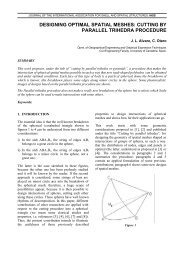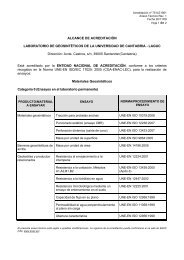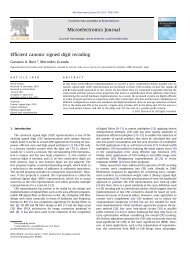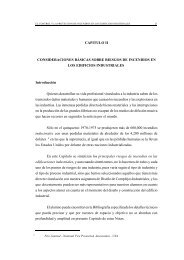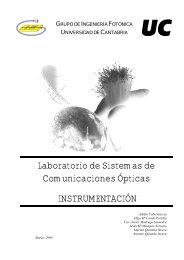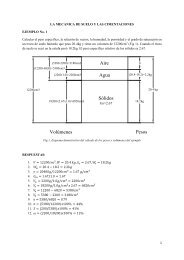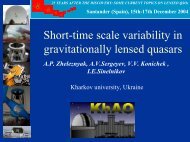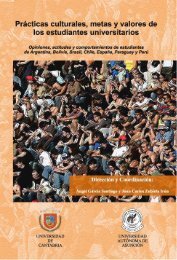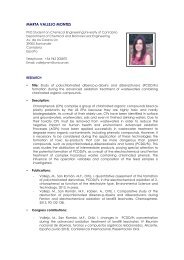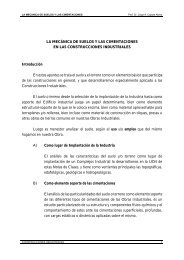37º IAHS World Congress on Housing: - Universidad de Cantabria
37º IAHS World Congress on Housing: - Universidad de Cantabria
37º IAHS World Congress on Housing: - Universidad de Cantabria
- No tags were found...
You also want an ePaper? Increase the reach of your titles
YUMPU automatically turns print PDFs into web optimized ePapers that Google loves.
XXXVII <str<strong>on</strong>g>IAHS</str<strong>on</strong>g><str<strong>on</strong>g>World</str<strong>on</strong>g> <str<strong>on</strong>g>C<strong>on</strong>gress</str<strong>on</strong>g> <strong>on</strong> <strong>Housing</strong>October 26 – 29, 2010, Santan<strong>de</strong>r, SpainCODE: 942PROTOTYPE THERMOELECTRIC CLIMATE SYSTEM FORITS USE IN RESIDENTIAL BUILDINGSCésar Martín Gómez a , María Eguaras a , Natalia Mambrilla a , Joaquín Torres a , Juan CarlosRamos b , and Alejandro Rivas ba Department of C<strong>on</strong>structi<strong>on</strong> Science – Installati<strong>on</strong>s and Energy<strong>Universidad</strong> <strong>de</strong> Navarrae-mail: instetsaun@unav.esb Department of Mech. Engineering, Thermal and Fluids Engineering DivTECNUN (<strong>Universidad</strong> <strong>de</strong> Navarra)e-mail: jcramos@tecnun.es / arivas@tecnun.esKey words: Architecture, HVAC, thermoeletric, resi<strong>de</strong>ntial, efficiency.AbstractThe School of Architecture of the University of Navarra has begun a project which c<strong>on</strong>sists inc<strong>on</strong>structing a prefabricated module, c<strong>on</strong>sisting of a simplified inhabited housing unit, andm<strong>on</strong>itoring over the course of <strong>on</strong>e year the behavior of a thermoelectric installati<strong>on</strong> thatprovi<strong>de</strong>s service to this module.The principal objective of the project is to quantify the resp<strong>on</strong>se capacity of a thermoelectricclimate c<strong>on</strong>trol system applied to a prototype, and evaluate its energy and ec<strong>on</strong>omic costs inthe case that the system were applied in an apartment building.The <strong>de</strong>velopment of this project represents the applicati<strong>on</strong> in the field of c<strong>on</strong>structi<strong>on</strong> of atechnology that already is in use in other areas, fundamentally the military and aerospace.Therefore, we do not seek to <strong>de</strong>m<strong>on</strong>strate the performance of Peltier cells per se, but rather toevaluate how they functi<strong>on</strong> when applied to the resi<strong>de</strong>ntial area, and to analyze both thepositive and negative aspects of their use.In this regard, it must not be forgotten that Spanish regulati<strong>on</strong>s also require the evaluati<strong>on</strong> ofthe maintenance needs of climate c<strong>on</strong>trol equipment, and, in this regard, Peltier cells offer animportant advantage: Despite the fact that the initial investment is greater than with ac<strong>on</strong>venti<strong>on</strong>al method of climate c<strong>on</strong>trol, the maintenance costs are nearly zero.For these reas<strong>on</strong>s, an objective of the project is to estimate the c<strong>on</strong>structi<strong>on</strong> and amortizati<strong>on</strong>costs of the applicati<strong>on</strong> of this technology in the resi<strong>de</strong>ntial area.37º <str<strong>on</strong>g>IAHS</str<strong>on</strong>g> <str<strong>on</strong>g>World</str<strong>on</strong>g> <str<strong>on</strong>g>C<strong>on</strong>gress</str<strong>on</strong>g> On <strong>Housing</strong> Science 315



